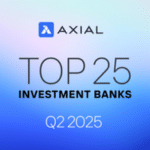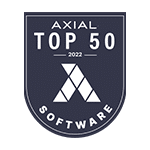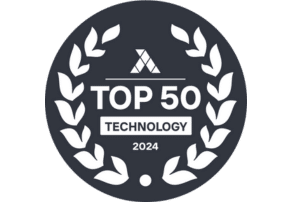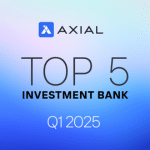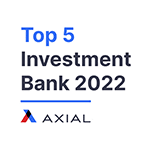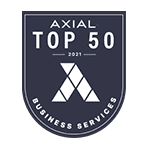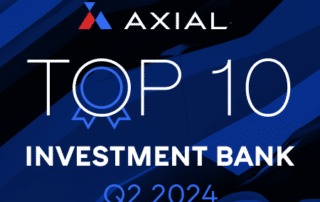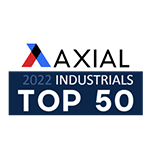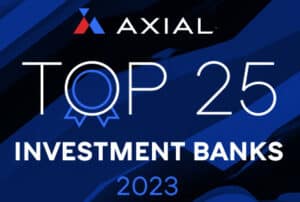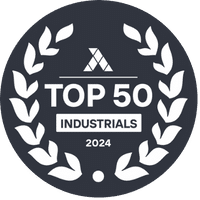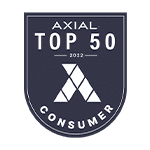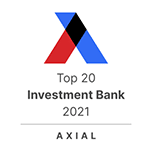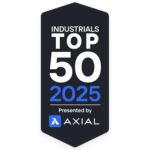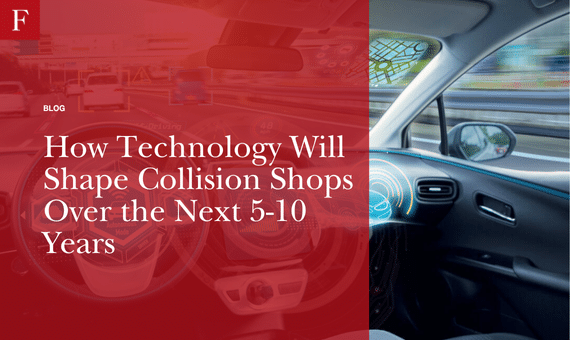
How Technology Will Shape Collision Shops Over the Next 5-10 Years
Previously published on Autobody News
ADAS, AI and autonomous vehicles are changing the industry and creating opportunities for repair facilities with the right mindset.
Frank Terlep has had a front row seat to the past 40 years of the collision repair industry’s tech evolution.
Beginning with his development of one of the first software applications for the automotive aftermarket in 1984, he has helped design and launch several advancements. In 2019, his company, Auto Techcelerators, was acquired by Opus IVS, where Terlep now serves as vice president of ADAS solutions.
Terlep recently appeared on an episode of The Collision Vision podcast, driven by Autobody News and hosted by Cole Strandberg, to unpack the latest advancements in vehicle safety systems and how collision shops can prepare for what’s next.
‘ADAS Is Doing Its Job’
Terlep said there are two major dynamics shaping the ADAS calibration market currently: more companies and products are being developed to provide the service, while insurers are trying to manage the many different invoices produced.
This creates a “virtual triangle” of a shop, a calibration provider and an insurer, Terlep said.
“It’s an interesting dynamic,” he said. “Now it’s not just the consumer and the shop [and the insurer]. You have now a fourth piece — a provider — so call it a diamond.”
Insurers also are concerned with making sure the technicians and companies providing calibrations are doing them correctly.
“They’re still trying to figure out — and I think the industry is as well — how do we make sure we get the right people doing the appropriate calibrations?” Terlep said. “Because whether we like it or not, I still think it’s the wild, wild West out there in terms of people doing calibrations in parking lots, in the open air, in trailers. So that insurance dynamic will continue to get better, I think.”
Strandberg asked if Terlep thinks ADAS equipment offerings are getting close to meeting demand.
“I don’t think we’re even close,” Terlep said. Despite estimating 250 to 300 companies are currently producing ADAS equipment, he said there is a long way to go to cover the need to provide calibrations to the entire industry.
The current decrease in claims counts can be attributed to several factors, one of which is the fact “ADAS is doing its job,” Terlep said.
“I think the number of actual repairable vehicles and claims are going to continue to go down,” he said.
A large percentage of collisions are rear endings, which have decreased dramatically in vehicles equipped with automatic emergency braking (AEB).
“Those type of accidents…are going to be dropped 50, 60%, which changes the whole dynamic of our collision industry over time,” Terlep said. “The ADAS technology is starting to work.”
The Future of AI in Collision Repair
AI is growing and improving across all industries, Terlep said. As a software development company in the collision repair space, Opus IVS’ challenge is to pick “which one do we put our bid on.”
AI has been a part of ADAS for a long time already, he said, and will only continue to increase.
Terlep pointed to a white paper published earlier this year by Ascential Technologies, summarizing a report by one of its brands, Burke Porter, showing ADAS can require calibration after normal wear and tear, not only after collisions. This could potentially open a new line of revenue for collision shops that have invested in calibration equipment but are seeing fewer claims.
“I think our industry in general is going to start to change from collision-only to a much broader solution,” Terlep said. “I think you’ve got some of the MSOs obviously already in that space. I think you’re going to see more and more of that.”
For model year 2029, federal regulations will require all light passenger vehicles come standard with AEB that works at 65 mph.
“It’s going to change the game completely, because the specifications are so tight that once they come out of calibration, there’s going to have to be a way to validate that that technology works on the road,” Terlep said.
He predicted that one day, vehicle owners will have to verify ADAS is calibrated correctly to renew their registration, the way some states require emissions testing now.
That will require technology in the vehicles themselves that make it easier to verify ADAS sensors and cameras are calibrated. “It doesn’t do a very good job today, but that’ll change,” Terlep said. “AI will play a role there.”
Beyond ADAS, AI will “permeate every aspect of what everybody does in our industry, period, from the time the vehicle’s in an accident till the time the vehicle is at the end of its life,” he added.
The Future of Autonomous Vehicles
Strandberg asked what AVs will look like in five to 10 years.
Waymo’s self-driving taxi service, which started in Phoenix, AZ, is now in five cities with plans to expand to a total of 10 by the end of this year.
“That tells me that the technology and the vehicles are working,” Terlep said. “So now it’s a matter of how do we scale, in my opinion.”
As Waymo and other “robotaxi” services grow, someone will have to service them, he pointed out. This could be another opportunity for collision shops in metro areas where they will operate.
Plan for the Future of Your Shop
Strandberg said a shop owner listening to the episode so far might be feeling their blood pressure or heart rate elevating, as ADAS, AI and AVs may sound like more bad news for claims counts.
“What would you be doing if you were someone in in those shoes today?” he asked.
Terlep said he would figure out how to get into the business of servicing those technologies.
“We know ADAS calibrations are going to go through the roof. It’s just a matter of time,” he said. “So if I’m a collision center, I’m going to be looking at how do I get into that business? And you heard me say this five years ago. I think you have to be in that business.”
Collision shops are better positioned than mechanical shops to do that work because they tend to be larger. “They can find space to put the ADAS equipment in and have the proper facilities,” Terlep added.
That means collision shops could offer recalibration services to local mechanical shops.
Strandberg asked if vehicles will ever be able to self-calibrate.
Waymo requires its driverless taxis to undergo static recalibration after a certain number of hours of operation. “Today, those AVs are not automatically calibrated,” he said. “They’re calibrated by static boards and static tools. So if we’re looking over the short hill, I don’t see the ADAS technology self-calibrating, but over time, sure.”
Terlep said the collision industry “always thinks it’s going to change faster than it does.”
“I don’t see the requirements in terms of facility equipment in the short term — again, five years — I just don’t see it changing,” he said. “Maybe after that.”
Strandberg asked what the incentive is for a legacy OEM, like Ford, to invest in self-calibrating ADAS technology.
Terlep said those automakers work with suppliers that produce the hardware to run the vehicles’ software. Continuing with Ford as the example, its BlueCruise self-driving technology works with sensors built by a supplier — meaning Ford would have to figure out how to self-calibrate sensors it doesn’t build.
“That kind of limits their ability to get creative in a way, unlike Tesla,” Terlep said. “Tesla owns the whole thing, from software to hardware. So that puts them in a different place. Same with Rivian.
“I think that for the [legacy] OEMs to go to self-calibrating cars is going to take a while,” he said. “They have to bring their stuff in-house.”
The Right Business Model to Service ADAS
Strandberg asked if it’s smarter to invest in a remote, mobile or brick-and-mortar business model for ADAS calibration services.
“It would be an approach of all of the above,” Terlep said. “Every manufacturer has different calibration requirements, so if I’m going to be the one performing calibrations for whomever it is — collision, mechanical, fleet — I have to be flexible in a way to be able to service my customer now.”
A mobile calibration business must set facility lighting and space requirements for shops it services, Terlep said, while a brick-and-mortar company can control that environment. Remote calibrations can work if there’s a way to validate the facility and equipment where the vehicle is located.
Whichever business model an owner chooses, they will have to find qualified technicians.
Terlep said he has seen organizations bring in people with no industry experience to learn how to use a scan tool.
“Learning how to press the buttons on a calibration tool only solves one of the problems,” he said. “They can follow the directions on the tool, but what happens when it doesn’t work right? By the way, that happens a lot.”
However, the technology makes the ADAS calibration industry a great prospective career for a larger group of people who may have not considered collision repair before.
“But to be candid, I think we do a horrible job of marketing our industry to those types of people,” Terlep said. “If you like to fix technology, what we’re going through today is like a goldmine for these kids.”
The Future of the Collision Repair Shop
Strandberg asked Terlep to paint a picture of what a collision repair shop will look like over the next five to 10 years.
“If I’m going to be successful, I’m going to be in the calibration business,” Terlep said. That means a shop either dedicates or adds space to be able to do calibrations, or builds a separate facility to perform them.
The next step is to specialize. “You can’t be a generalist anymore,” Terlep said. “You just can’t.”
OEM certifications will continue to become increasingly important as every OEM introduces more technology. “I also think it gives the repairers an in with the dealers who don’t want to be in this business,” Terlep said.
Claims will keep going down, but severity will go up, “again based on the technology,” Terlep said.
Total losses will also increase as long as the average age of the car parc continues to increase, he said. “It’s just natural, unless you figure out a way to revalue these older vehicles.”
Finally, “whether we like it or not, consolidation is going to continue to roll,” Terlep said.
He also had predictions for how technology will change shop operations.
AI is going to be a “big play” for technicians, estimators and repair planners, he said. “Those areas of the business are going to be much more efficient over the next five years because of AI, which means I don’t have to hire as many, or I’m going to get them trained faster than I do today.”
At Opus IVS, Terlep leads a team of software developers who are “three times more productive than they were 18 months ago,” he said. “And guess what? I’m not getting rid of any of them.”


